#on publishing lm
Text


An interesting letter from Paul Meurice and the rabbit holes it led me down
If you're bored and want something fun/french to read, consider reading the correspondence of Victor Hugo and Paul Meurice. You will find lots of interesting tidbits and really quite touching phrases. Here's a look at just one letter that caught my eye (the above portraits become semi-relevant later).
So the letter is undated but contextually, it's from early June 1862. Hugo, in Guernsey, was in close communication with Meurice, in Paris, over the final corrections for Les Miserables and the publication of its last volume. Meurice writes:
Javert Derailed, The Death of Gavroche, The Grandfather, The Passion in the Sewer, the whole drama, the whole volume, the whole poem is splendid. My word! I must straightforwardly decline to express my enthusiasm to you. I would need to have your prodigious execution and your incredible form in order to explain the depths of my feelings. My emotions and my admiration are inexpressable. I can’t understand Barbey d’Aurevilly.* I’ll tell you simply: it is sublime! I cried! You are greater than anyone, greater than yourself!
*The phrase is "Je jette ma langue aux Barbets d Aurevilly." This gave me some trouble to translate. I figured that he is using the expression jeter sa langue au chien (which I gather means something like "I can't guess at",) but replacing chien with barbet, a type of dog that sounds like Barbey, and also possibly making some sort of pun about d'Aurevilly's distinctive barbe (aka beard)? I really thought he might be making a pun about Barbey's 'barbs' (as in cruel remarks, since his reviews were very negative) but it doesn't seem like 'barb' has that meaning at all in French.]
Now bear in mind that in this next part, by "volume ten" he means the latter half of Jean Valjean, and by "these last four volumes," he means what we would call the last two, L'idylle rue Plumet, et l'epopee rue Saint-Denis and Jean Valjean
I have only read the first page of volume ten. We are very behind on the assembly, printing, and everything. Yet we will do everything so that it appears on the 30th.
And it was published the 30th! I don't remember rn what was causing the delays but it is surely mentioned in Bellos's book or in Leulliot's.
The effect and the success of these last four volumes will be immense. More irresistible and more unanimous than that of the other parts. Too irresistible and too unanimous from a certain point of view. It offends many people; some critics are cold, though they were well dispositioned before the book’s appearance. Don’t read into it, don’t hear things in these particular silences and particular reluctances: it can be felt, seen, and touched.
Fun to speculate about if Meurice was concerned about a particular person's silence (in which case, whose?) or if it was just in general. Hugo had expressed his frustration over the reception to both Vacquerie and even Jules Janin. I'd have to look over their correspondence again to see what Hugo said in particular to Meurice but he was surely aware of how Hugo felt.
OKAY now on to the subject of the portraits, Meurice tacks on this aside at the end of the letter:
I am writing this to you in haste, having let myself run late. Do you remember a portrait of you, full-length, but young, made some time ago by Deveria? The painting is excellent but why! I never knew you like this…This portrait would have belonged to a M. le marquis de Valori! If it is truly your portrait, it’s very strange. You should remember it then. You are seated on a red damas couch. White pants, a small redingote. You are blond, thin, elegant. The person who has it wishes to sell it. She’s asking for 250 francs. Would it amuse you to have it? They’ll want your response at the end of the week.
Of course when I read this I want to know what image he is talking about. I first thought of the image on the left (scroll back up)...the image on the left is a black and white photo of what is presumed to be a portrait of Victor Hugo at age 16 (I say presumed because that is literally how it is described on Wikipedia) (sometimes it is just described as Hugo as an adolescent) by Achille Devéria (although apparently it has been disputed which Devéria painted it?). The original was, supposedly, at some time in the collection of Prime Minister of France Louis Barthou. Where is it now? Perhaps it is in the private collection of Ms Taylor. Can we get a color photo of it? No. Swift.
So my mind went to this image because the subject is young, blond, possibly Victor Hugo, and possibly created by Devéria. However, it doesn't fit the rest of the description.
Then @pilferingapples kindly made me aware of the portrait on the right. From what I have found online, this one is attribution to Paul Gavarni, although the websites making that attribution are pretty sketch. The portrait was supposedly at one time in the possession of M. le D. F. Jousseaume, a bookstore owner. Where is it now? Also unknown.
(The provenance of both of these is kind of sketchy tbh. I checked three books about Hugo that I have which include images (Victor Hugo: A Tumultous Life by Samuel Edwards, Victor Hugo: A Biography by Graham Robb, and Victor Hugo: S'il n'en reste qu'un by Sophie Grossiord, a curator at the Maison Victor Hugo) and none of them include either of these images.)
Whatever the case, the image on the right fits the description in almost every way: it is full length (en pied), the subject is young, thin, there's the red seat, white pants, wearing a coat, and he's "blond" by french standards apparently (and consider that this photo may be a bad representation of the portrait). I haven't seen that image attributed to Deveria but it's possible (or possible that Meurice would believe it's possible.) Then there's the question of provenance. Why did M. le marquis de Valori have it and who was the woman selling it? My guess is that the man in question was Henri-Zozime de Valori, a writer who knew Nodier and who died in 1859. He had published a collection called Odes choisies: précédées d'un discours sur la poésie et les poetes lyriques anciens et modernes which was reviewed (by "S.") in Le Conservateur littéraire so he may have been aquianted with Hugo some way?
Anyways, evidently, Hugo didn't want the portrait because he never responded to that part of Meurice's letter and it eventually came into the hands of the bookseller D. F. Jousseaume. And where is it now? No idea! Okay, the end.
8 notes
·
View notes
Text
On today's Les Mis Letters:

#ill be surprised if im the first person to make this meme in the 161 years this book has been published#even so i needed to make this#les mis#les mis letters#lm 5.1.4#valjean
198 notes
·
View notes
Text
surprise surprise, les mis letters has got me Thinking about Catholicism again!
#les mis letters#just tagging for personal use hfjfjwj#but yeah myriel my beloved#les mis published in 1862... idk when exactly myriel becomes bishop of digne but its so interesting#bc myriel is really serving that preferential option for the poor swag#i love myriel so much im breaking out my catechism handouts HAHAJSHDHF#but seriously to my knowledge All That is only really articulated in the 1960s and 70s onwards with the really revolutionary clergy#and its interesting to like grapple with/get into myriel and catholicism in general as it’s presented in lm#while knowing that. this is published 1862!!! the ph is still colonized by then!#noli me tangere was published 1887!!! and in it is padre DAMASO!!! a FRANCISCAN! who OUGHT to be like myriel but literally steps on '>#'indios' and DEMANDS they pay obeisance. a FRANCISCAN portrayed like that! and here is myriel#a BISHOP!!@#padre damaso is also a franciscan iirc and dont get me started on irene and camorra (CAMORRA MY BELOATHED DIE BY MY SWORD)#sorry digression but yes very interesting#i guess part of it is that hugo was writing post revolution... that france had already had its anticlerical frenzy with the revolution and#hugo wasnt anticlerical and all that... and of course while the clergy did do oppression in france i don't think it was as bad as in the ph#where they were complicit in and participated in incredibly harsh and inhumane oppression and racism#(cough the monasterio de santa clara only accepting full blooded spanish as nuns until 1898 when the americans came.. though they did accept#native lay sisters who did household work etc)#like the church in lm is cruel in its discompassion/as a part of the wider world which is cruel bc it does not care/bc of apathy#meanwhile the church in noli and fili is cruel bc. okay first off inherently oppressive but second the people in it are personally shitty#damaso isnt just cruel in apathy he literally [*****] someone and has ibarras father disgraced#and he didn't do anything about what he knew was happening in the convent#anyway just spitballing im overdue for a reread of both anyway#but i have been doing research on the catholic institutions of the ph recently for Reasons#and the things they did.... dear god the children in the monasterio de santa clara....#the 'problem' with the friars coercing women in the confessional....#agh sorrh uh#tw clerical abuse#i think
6 notes
·
View notes
Text
I sometimes forget how influential Robin McKinley was on me as an author, because even though I've never finished any of her books, the fact that she has two retellings of B&B taught me that it's okay to revisit a fairy tale multiple times.
And now I have around twelve Cinderella's, five of them published, and I couldn't be happier.
#I also once published three Snow White Retellings within a few months of each other.#Other fairy tales I love picking on include The Little Mermaid and Sleeping Beauty though none of my LM's have been published yet#Little Red Riding Hood has been a recent fixation#robin mckinley
11 notes
·
View notes
Text
KUNSTENAAR KLEURT EEN ZWARTE BLADZIJDE VAN DE VADERLANDSE GESCHIEDENIS

Keti Koti een gezicht geven. Letterlijk. Dat is de taak die kunstenaar Maartje Jaquet zichzelf heeft opgelegd. Met het boek ALA SMA TORI geeft zij daar vorm aan. Het boek is vooral een herschrijven van de geschiedenis. Want het slavernijverleden van het Koninkrijk der Nederlanden is een periode die doelbewust is vergeten. Weggestreept uit het collectieve geheugen. Deze zwarte bladzijde is uit de geschiedenisboeken gescheurd. Wel werd de kinderen op school onderwezen hoe best Nederland was, hoe tolerant en vooral christelijk. Maar niet dat dit zelfde Nederland, handelsgezind als het is, de aanzet heeft gegeven tot het doelbewust verschepen van talloze tot slaaf gemaakte mensen. Nergens in de vaderlandse geschiedenis is dat terug te vinden, althans tot voor kort. Maartje Jaquet probeert met haar boek dit gat te vullen, de zwarte bladzijde in te kleuren.
Keti Koti is Sranan Tongo, de Surinaamse taal, voor ‘de ketens zijn gebroken’. De ketenen waarmee de tot slaaf gemaakte mensen letterlijk aan hun eigenaren en elkaar vast zaten zijn doorgeknipt. De slavernij is onder druk door Nederland 160 jaar afgeschaft in Suriname en op de Caribische eilanden. De officiële datum dat dit plaats had is 1 juli 1863, maar nog tien jaar langer was er onder Staatstoezicht onbetaalde dwangarbeid. Dit jaar 2023 is daarom uitgeroepen tot Herdenkingsjaar Slavernijverleden. Maar al langer vieren de Surinamers en de mensen van de Caribische eilanden de Dag der Vrijheden.

logo Gertie Jaquet
Drie jaar geleden is Maartje Jaquet begonnen met het verbeelden van Keti Koti. Eerst op 1 juli 2020 tekende en schilderde zij portretten van voorbijgangers en feestvierders. Op de plek ging ze en plein air de mensen met pen en papier tekenen, nadat ze deze eerst om toestemming had gevraagd. Later maakte ze foto’s en werkte deze naderhand thuis uit in een schilderij. Op die manier heeft ze een groot aantal personen vereeuwigd. Deze portretten staan alle in het boek ALA SMA TORI, dat zoveel betekent als ‘verhalen van een ieder’. Want naast de portretten vertellen de afgebeelde figuren hun persoonlijke verhaal. In een gesprek met de kunstenaar laten zij openhartig weten wat Keti Koti voor hen betekent. Welke druk het slavernijverleden op de familie legt. Dat dit verleden nog na echoot in hun eigen dagelijks leven. En waarom ze de 1e juli jaarlijks als herdenkingsdag in Nederland willen zien, met een gelijke status als 4 en 5 mei.

De mensen in de verbeelde Keti Koti zijn alle onbekende figuren voor de meeste van de lezers van de uitgave, voor mij dus. Maar door de verhalen die ieder van hen in het boek heeft laten afdrukken krijgen zij een gezicht, letterlijk en figuurlijk. Het zijn overwegend emotionele verhalen, want dit stuk door ons vergeten historie is nog voortdurend levend bij hen. Jaquet beeldt hen in meerdere opzichten sprekend af. Ze weet met pen en waterverf de ziel van de mensen te treffen. Het is een groep mensen die breed lachend het leven inzien. Ondanks het trieste verleden dat hen nog altijd tekent. De families zijn feitelijk ontworteld. Die eeuwenoude roots liggen nog daar in het land van herkomst. Wreed werden de mensen ontheemd en weggevoerd naar onbekende streken. Verhandeld als beesten om voor een hongerloon zwaar werk te doen. Het staat niet met naam en toenaam in de geschiedenisboeken, maar toch is dat zo langzamerhand wel bekende informatie.

Het is een pijnlijke geschiedenis die Maartje Jaquet voor het voetlicht brengt. Op haar manier geeft ze hier aandacht aan, met haar kunst en door de verhalen uit de eerste hand. “Verhalen spelen een belangrijke rol in de overdracht van dat deel van de geschiedenis dat bij mij op school niet werd behandeld. (…) En, hoe confronterend en verdrietig de waarheid ook is, we moeten deze in de ogen kijken. Alleen dan kunnen we samen helen, en kunnen we samen verder.” In het boek kijkt de waarheid mij hoopvol aan. Wordt de waarheid luchthartig aan mij uit de doeken gedaan. Er spreekt optimisme uit de woorden en de beelden, kracht en doorzettingsvermogen. Een volharden om vrij te zijn. Het verbindt deze mensen, omdat ze een gezamenlijk verleden hebben. Zij zijn er omdat hun voorouders hebben overleefd.
Jaquet hoopt met dit boek een steen bij te dragen aan een open en gezamenlijke toekomst, Nederlanders en medelanders. Omdat, zo schrijft ze “wanneer we meer over elkaar weten, we naar elkaar luisteren, we elkaar beter kunnen begrijpen”. Om dit te realiseren heeft ze van ALA SMA TORI niet alleen een kijk- en leesboek gemaakt, maar dit ook zo opgesteld dat het als lesmateriaal op de basisschool in de bovenbouw en in het middelbaar onderwijs gebruikt kan worden. Daarnaast kan ermee gewerkt worden in buurthuizen en bij ouderenverenigingen. Het is breed inzetbaar om gesprekken en uitwisselingen tussen groepen aan te gaan. Een boek voor tieners, jongeren en volwassenen om erkenning en begrip voor de gevoelens die er leven te kweken.
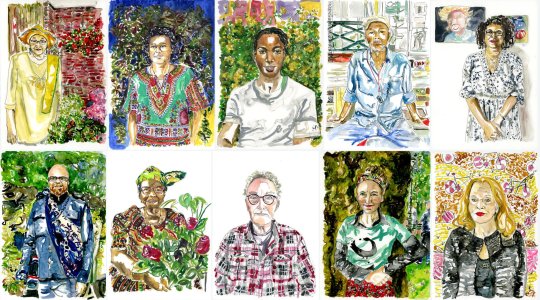
De gekleurde bevolking in Amsterdam Zuidoost is in het boek aan het woord gelaten. Maar de kunstenaar vertelt ook ruimschoots over zichzelf en haar ervaring. Want, naast dat er een legio verhalen van anderen over Keti Koti gaan, is het toch zeker ook haar eigen beleving van en met het verleden, het heden en de toekomst van deze bevolkingsgroep. Het project is begonnen met de enkele portretten die ze drie jaar geleden maakte. In de jaren daarna heeft ze daar vele aan toegevoegd zoals hiervoor beschreven. En is Jaquet in gesprek gegaan met de mensen om meer achtergrond te krijgen. Daarnaast heeft ze van ieder van hen een uitspraak los gekregen, een soort van lijfspreuk, en deze op een lap stof geschreven.
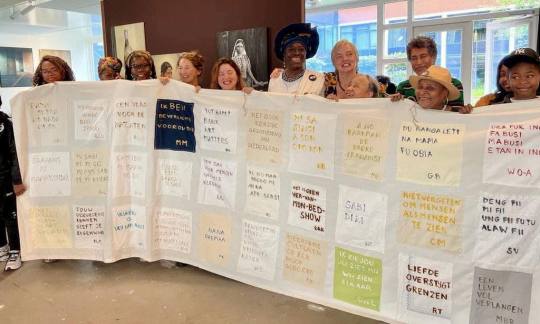
Voor de inkt van het schrift gebruikte zij een grondstof die een persoonlijk belang en lading heeft, zoals tabak, koffie, paarse bramen en lijsterbessen, kurkuma, chocolade, sambal en tomatenpuree. Het maakproces van deze diverse brouwsels staat tevens afgebeeld in het boek. Verder maakte ze van de feestelijke herdenkingen veel foto’s en liet ze de geportretteerden oude en nieuwe foto’s uit de eigen familie inleveren. Al dit fotomateriaal naast de schilderijen en tekstdoeken maakt van de uitgave een kleurig geheel. Even kleurig als dat haar modellen in het leven staan. ALA SMA TORI, Keti Koti verbeeld, is een bijzonder project dat de zwarte bladzijde van de Nederlandse geschiedenis ruimschoots belicht. De nazaten van de tot slaaf gemaakte mensen in het stadsdeel Zuidoost worden ermee in het zonnetje gezet. Het is niet alleen een boek om de herdenking van de afschaffing van de slavernij levend te maken, maar ook een leerboek om het gat in de geschiedenis te vullen. Mede door dit boek kan niet meer hiervan worden weg gekeken. En door de excuses die zijn gemaakt is het onderdeel geworden van onze historie. Maartje Jaquet legt een kleurige steen in de Gran Rio en één in de Nederrijn, zodat het water daar nu andere lopen nemen dan deze voorheen deden.
ALA SMA TORI, Keti Koti Verbeeld. Door Maartje Jaquet. LM Publishers, 2023.
#ala sma tori#keti koti#maartje jaquet#amsterdam zuidoost#slavernijverleden#portretten#kunst#LM Publishers
0 notes
Text
as someone who always forgets to repeat character names throughout their writing, writing relationships and interactions between characters who use the same pronouns is my Achilles Heel. every meme you see that’s like “what happened to him?” “he ate without watching youtube” or any variation of that? that’s me but forgetting to specify which pronouns refer to which person.
#editing my work is a nightmare and i am grateful to all the people who have done it#i know it is immediately obvious that i do not have a writing background. i'm literally just a guy#sometimes i wonder/worry how that'll come up if/when i try to get published#LM (and i cannot stress this enough) AO
0 notes
Text

let me be a little transparent to you guys~
my mental health atm is shit. ik i moved months ago but it still hasn't picked back up. i'm sailing through this without the help of a professional (yet) because i can't afford it, my OCD is going nuts, and moving out of a difficult household is rough. i won't get into details because i'd rather keep my personal private but my lack of resources has taken a toll on the production of Life Mission. ik i promised an update but i'm still not feeling great mentally and i want to produce and publish LM when i am in a better headspace. idk when it will be up again. i don't really want to call this a hiatus. it's just a matter of time until LM is back. i just don't know when.
but rest assured it will be back. we will see leo save his brothers. raph's arc is still in productuon. just be patient~ ❤️🧡💜💙✨️
•
if you want to support me and help me set up my office so i can be in a better space to work in, my ko-fi page is in the LM website (l!nked on my bio💖) my set up rn is not ideal for producing LM so setting up my office space would be a huge help~
•
( 🪴 please do NOT repost, edit, trace, use, and/or sell 🪴 )
#rottmnt#life mission au#rise of the teenage mutant ninja turtles#teenage mutant ninja turtles#tmnt#tmnt 2018#life mission: save my brothers au#my ert#rottmnt leo#rottmnt fanart#rottmnt life mission au
1K notes
·
View notes
Photo
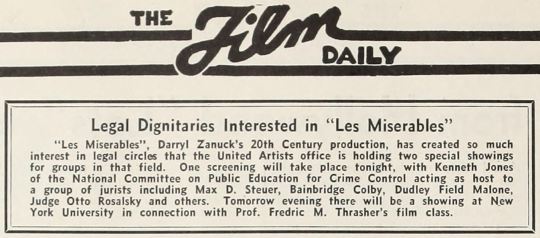
Legal Dignitaries Interested in “Les Miserables”
“Les Miserables”, Darryl Zanuck’s 20th Century production, has created so much interest in legal circles that the United Artists office is holding two special showings for groups in that field. One screening will take place tonight, with Kenneth Jones of the National Committee on Public Education for Crime Control acting as host to a group of jurists including Max D. Steuer, Bainbridge Colby, Dudley Field Malone, Judge Otto Posalsky and others. Tomorrow evening there will be a showing at New York University in connection with Prof. Fredric M. Thrasher’s film class.
Source: The Film Daily, 10 April 1935
-Max D. Steuer [“best known for his successful defense of the factory owners after the Triangle Shirtwaist Factory Fire]
-Bainbridge Colby
-Dudley Field Malone [co-counsel for the defense of John T. Scopes, by the end of 1935 he would declare bankruptcy and move to Hollywood to work for 20th century Fox],
-Judge Otto Posalsky
-Prof. Fredric M. Thrasher’s film class [Chicago School sociologist, around this time he began studying the effects of movies on children and “served widely as a consultant to groups concerned with motion pictures, crime, prison reform, and prevention of juvenile delinquency,” at one point he was chair of the National Committee on Public Education for Crime Control]
-the National Committee on Public Education for Crime Control: unfortunately I can’t find much, except this footnote in Thrasher’s book
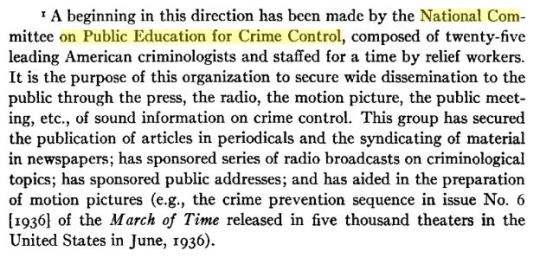
What I wouldn’t give to have been a fly on the wall of these conversations! I’m sure they were...interesting. 1935 Les Misérables really had a cultural moment and the message was questionable.
#les miserables#lm 1935#speculation and mysteries#lm in america#lm in education#my research#I am sorry for publishing all these posts at once but I am tired of having them all sitting in my drafts#and I don't feel like messing with my queue
6 notes
·
View notes
Text
Potentially stupid question - does anyone know of any books in a similar style to LM Montgomery, but set in modern times? (Distinct from AUs of LMM set in modern times! I'm looking for original fiction here). I was musing today that I can't really think of any examples, something I find interesting in combination with the fact that most of LM Montgomery's novels were published contemporaneously. Part of the charm of the novels for me is the historical setting - it lends to the coziness - but that (supposedly) wouldn't have been the case for its contemporaneous readers, at least not in the same way. The world is perhaps a little more clinical nowadays, but I'd be curious to know if her type of writing could work in a reality with cell phones and social media. I know it could because it seems ridiculous to think otherwise...and yet I can't think of an example!
68 notes
·
View notes
Text




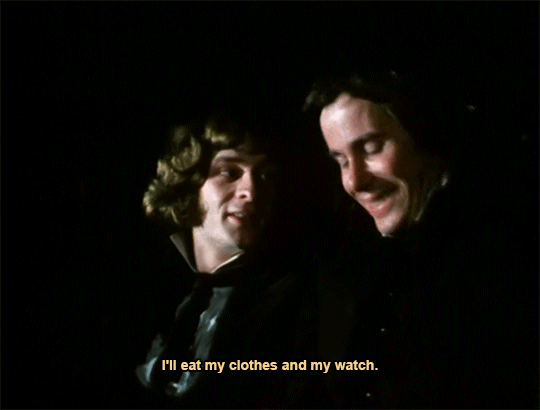
LES MIS LETTERS IN ADAPTATION - Res Angusta, LM 3.4.6 (Les Miserables 1972)
“Do you know English?”
“No.”
“Do you know German?”
“No.”
“So much the worse.”
“Why?”
“Because one of my friends, a publisher, is getting up a sort of an encyclopædia, for which you might have translated English or German articles. It is badly paid work, but one can live by it.”
“I will learn English and German.”
“And in the meanwhile?”
“In the meanwhile I will live on my clothes and my watch.”
#Les Mis#Les Miserables#Les Mis Letters#LM 3.4.6#Les Mis 1972#Les Miserables 1972#Marius Pontmercy#Courfeyrac#Marius#lesmisedit#lesmiserablesedit#lesmiserables1972edit#pureanonedits#Les Mis Letters in Adaptation#they're so CUTE in this adaptation!!#Marius's SMILE
120 notes
·
View notes
Text
- MOD PUBLISH -
This is only a WIP. It's doesn't contain many sliders. I just thought people might appreciate me publishing the WIP & updating it along the way. The name of the esp & all might change as well along the process. This is really just a rough WIP atm.
I mainly already publish it in this state, because of the nostril depth slider I added. It saved my sanity in the short amount I added it already so much. And I can imagine others might feel the same. I HATE editing the nostril depth ingame. I never had issues working those in Blender, thou. So I made myself a slider. Because I hated as well to be forced to edit it FOR EVERY SINGLE NEW sculpt.
For now it's only women, because I always start with those & then work my way to what I wanna do, then I add it to men, too. But I can't promise anything. This is just really a WIP. Maybe I continue it, maybe I don't. But again, I thought maybe people appreciate it, that they can use it.




14 notes
·
View notes
Text
My husband and I traveled to see a close friend for a surprise birthday party. On our way we stopped at Attic Books and I found some treasures.
Also I had a chance to chat with the curator of https://lmmonline.org/
He was gathering unpublished poems and short stories by LM and had found a chapel published slim book with one of LM's poems in there. Spring Days?
Another fellow was a die-hard fan of LM and he had a Green Gables tattoo and a "I'm so glad I live in a world where there are Octobers. " quote.
Later we went to Juniper Books and I had another lucky find.
The cashier showed me a signed copy of Jane of Lantern Hill!!!
and the owner apparently had a rare copy of Anne of Green Gables and another I think Anne's House of Dreams...
Anyway it was a spectacular weekend , photo posts to come.
13 notes
·
View notes
Text

[Image ID: frontispiece of Anne of Avonlea by LM Montgomery, published by Bantam Classics. There is a quote from John Greenleaf Whittier:
“Flowers spring to blossom where she walks / The careful ways of duty / Our hard, stiff lines of life with her / Are flowing curves of beauty.” End ID.]
#cottagecore#anne of green gables#anne with an e#avonlea#john greenleaf whittier#image id in post#my posts
13 notes
·
View notes
Note
how was police work seen by the public in 19th century france? i think i read somewhere that no one really liked or respected them but i have no idea if i'm imagining it or not
Well it kinda depends on what part of the century you're looking at!
I'm going to hugely simplify here ( if people with more research on this want to reply and elaborate, please do!) , but in broad terms: police forces in the early 19C were seen in almost the same light as the criminals they interacted with. It was *not* a Glamour Job. They were paid badly, assumed to take bribes (because hey! look how badly they were paid!) tended to be from the lower or "criminal" classes, etc. They were basically brute force enforcement against known criminals or the socially marginalized, rather than detectives in the sense that a modern audience might expect.
But then over the course of the century, the role changed; by the time LM was published, cops were much more like a respectable profession, one a middle-class man might choose on purpose. It was a career that assumed some education and training , and had standards of behavior and everything. Which isn't to say that suddenly everyone liked and respected the police, but it was no longer a job strictly for social pariahs and outcasts.
(and of course in both cases they were upholding the prejudiced order of their society , that very much stays the same over the years)
(You can find a much more detailed explanation of these shifting roles here; warning for slurs used in the context of discussing bigotry)
27 notes
·
View notes
Text
Cuz We Are Living in a Canadian World, and I am a Canadian Girl
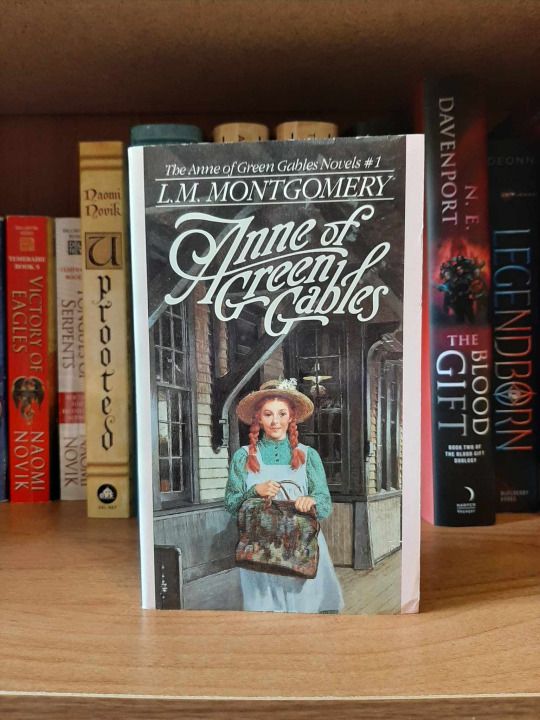
This was not my first copy of the classic Canadian book about girlhood. It also wasn't my second, which got lost in a move, and it wasn't my third, which...crap, I have no idea what happened to it, but it is the copy that is currently on my bookshelf. I was given my first copy at age nine or so, sitting in my maternal grandfather's living room in Ontario. That side of the family was and still is absolutely obsessed with the Anne books. They talk about Gilbert Blythe the way 2000s girls talk about Edward Cullen and Jacob Black. I'm pretty sure I have heard my cousins use the phrase "I found my Gilbert" in relation to their significant others. Then of course we moved to Alaska and I was on my own to find the rest of the Anne books. But for today, let's talk Anne of Green Gables.
Everyone's favorite PEI orphan is an extremely well-known character at this point, between the books themselves and a myriad of film and television adaptations aimed at kids and adults. Anne studies and Girlhood Studies are pretty popular in Canadian higher ed institutions (I have a friend who was focusing on Anne for her graduate studies), and the idea of this redheaded girl who can see the magic in the world has been sticky since LM Montgomery published in 1908.
Aside from Anne seeing the magic in the world--which, wow do we need that vibe back in this, the year of our lord 2023--one of my favorite things about the first book in the series is that it has massive found family vibes and does not shy away from the importance and joy of female friendships. Like, for all the Anne and Gilbert vibes in popular culture, Anne and Gilbert don't become Anne and Gilbert until the end of book 3 of the series, arguably realistically book 4, and their relationship matures and expands in book 5. But in Anne of Green Gables, Gilbert is just an annoying boy who transforms into an academic rival after Anne sets a hard boundary by way of a slate to the head.
What's critical about this first book is that the key relationships Anne forms are with Diana, Marilla, and Matthew. She gets to be a girl and have fun and adventures with her new family, her best friend, and a pack of Avonlea girls. There is something so pure and comfortable and heartwarming about the community that Anne builds around herself. This is extra poignant when one grows up with this book and grows to understand the full context from which Anne comes. Marilla understands immediately that Anne's light was miraculous for continuing to shine despite the neglectful, possibly abusive situations she came from--even if Marilla then immediately clamps down on that feeling for another few chapters.
Anne gets to be a girl with friends and free time and a family that loves her. There is something quietly magical about that, and I think that has quite a lot to do with the book's ongoing popularity, even if the popular culture imagining of Anne has drifted some over the years. For all that Anne herself sees a world full of dryads, white ways of delight, and romance, the quiet joys of Avonlea life and an Avonlea childhood is the foundation for Anne's imagination to fly.
#lm montgomery#anne of green gables#children's books#literary classics#books & libraries#books and reading#books and novels#book recommendations#books
25 notes
·
View notes
Text

Novel liquid metal nanoparticles for cancer photoimmunotherapy synthesized
Liquid metals (LM) such as pure gallium (Ga) and Ga-based alloys are a new class of materials with unique physicochemical properties. One of the most prominent applications of LMs is photothermal therapy against cancer, in which functional LM nanoparticles convert light energy to heat energy, thus killing cancerous cells. LM-based phototherapy is superior to traditional cancer therapy owing to its high specificity, repeatability, and low side effects.
In a new cutting-edge study, Associate Professor Eijiro Miyako and his colleagues from Japan Advanced Institute of Science and Technology (JAIST) synthesized multifunctional Ga-based nanoparticles that combine cancer phototherapy with immunotherapy.
The synthesized novel LM nanoparticle (PEG-IMIQ-LM) contains a eutectic gallium-indium (EGaIn) LM alloy and an immunological modulator imiquimod (IMIQ), both embedded inside a biocompatible surfactant DSPE-PEG2000-NH2. The findings of their study were published in Advanced Functional Materials.
Read more.
22 notes
·
View notes